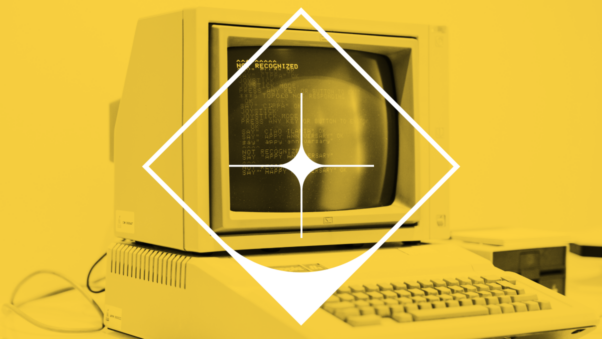How to Easily Measure ROI on Branding

Don't let the challenges of measuring brand ROI drive you to neglect the opportunity to better connect with your customers and build recognition – and loyalty.
How Every Business Can Measure ROI on Branding
Quantifying brand efforts is challenging.
Branding is primarily concerned with shaping perceptions, emotions, and attitudes toward a company or product. Brand is a somewhat intangible concept without a fixed timescale, affected by many internal and external variables, and affecting multiple touchpoints along the customer’s journey.
The fact that brand affects everything is part of why it’s so challenging to measure ROI on an ongoing basis or during a rebrand. Get into discussions of “brand awareness,” and you’re basically trying to measure the sentiments of people who might not be clearly engaging with you right now even though your presence is affecting their decisions (which is a potential win).
Unfortunately, as any branding agency can confirm, this measurement challenge often drives businesses to neglect their brand and put off the exact efforts that might move the needle on conversions.
The good news is that you likely already have tools and measurements in place that can help you gauge ROI on any rebranding or other investments that you make. You don’t need to embark on some complicated and expensive market research project; in fact, you can monitor your brand on an ongoing, real-time basis, using both quantitative and qualitative measurements to produce insights that can inform your next steps.
1. Short-term and long-term traffic trends
Whether it’s website traffic or in-person traffic, keeping an eye on both acute traffic patterns as well as long-term trends surrounding major brand events – such as a rebrand – is the simplest way that anyone can keep track of brand effort ROI. You likely have these statistics anyway, and you should be monitoring trends not just relative to your own efforts, but competitors, industry trends, and even major news events.
Keep track of major brand milestones, and monitor traffic alongside these milestones with the understanding that it may take weeks for the full effects of brand work to kick in. Make sure to factor year-over-year trends into your analysis, since these may cause temporary dips and surges that could confound your analysis.
2. Google Search Console
What specific search queries – branded or otherwise – are driving website traffic? Monitoring how these evolve over time can give you a sense of not just how your SEO strategy is playing out, but also what sorts of brand associations the public has as they discover and engage with your business.
Google Analytics can supplement this by providing year-over-year and month-over-month data on website traffic by channel, click-through rates, and time on site alongside user journeys and demographic insights.
3. Social media reach and engagement
Brand ROI is measurable on social media by monitoring reach and engagement metrics over time. Tracking the number of followers, likes, shares, comments, and mentions provides an indication of the brand’s visibility and resonance on social media platforms.
Social media analytics tools can also provide insights into audience demographics, interests, and sentiment, enabling businesses to assess the effectiveness of their digital branding strategies on different social media channels.
Pay attention to the tone of public engagement with your brand. Are there trends in the types of topics, associations, and criticisms that they bring up? How do these compare with your competitors? Looking at social media channels as well as public discussions in comments and platforms like Reddit can help illuminate customer values. You can get a sense not just of the success of your current brand efforts, but also future steps you can take.
4. Relevance of PR and outreach
Of course, the number of PR pickups over time and the type of coverage received can be an indicator of brand. But do you also keep an eye on open and response rates for any outreach you send? Do you monitor the way your messages are received when you reach out to a journalist or other new contact: is it friendly or hostile? Are industry contacts already familiar with you? When you receive outreach from other organizations, is it in line with the type of work you do? These can all be important indicators of your current brand success and are worth monitoring over time.
The next two points are focused a bit more on potential brand ROI, although they can help inform a baseline measurement ahead of brand work — or even help set expectations around future brand work.
5. Ask questions of your audience — strategically
You don’t have to mass-blast a ten-question survey to all your business contacts to measure the success of your brand. You can use social media or website plugins strategically to slide in polls – maybe even just for short periods of time throughout the year, or around major brand events – to get answers from your audience.
For example, if you are considering a rebrand or just implemented one, you may want to list out core themes from your brand refresh and then ask which one they value the most. This can raise your audience’s sensitivity – and receptiveness – to the changes you put in place, or help give you some guidance around what brand actions would most move the needle. Getting creative with the questions you ask can help you get the information you need, and drive audience engagement.
Pull aside random employees and ask them if they can articulate what your brand stands for. Is this an improvement over where you were? If not, you may have more work to do. You can also engage in more formal internal surveys to gauge brand ROI.
6. A/B test
One way to ease into branding decisions can involve setting up A/B tests to measure how your audience may respond to the changes you’re trying to put into place. This can also help drive productive conversations among stakeholders who might be unsure of how to proceed or resistant to change.
In Conclusion
Of course, the sky is the limit if you want to invest further in measuring brand ROI. Consulting agencies exist that focus entirely on market research, customer surveys, competitive data, and detailed reporting dashboards that can address unique business needs.
Any discussion around measuring brand ROI – or even discussing brand strategy in the first place – begins with setting clear objectives. What are the non-negotiable directions where progress is required? Clarifying this opens the door for future iteration, which can help make sure branding efforts are successful.
Once business goals have been clarified, measuring brand ROI becomes a matter of creatively aligning available measurement resources and their corresponding metrics to track performance over time.


